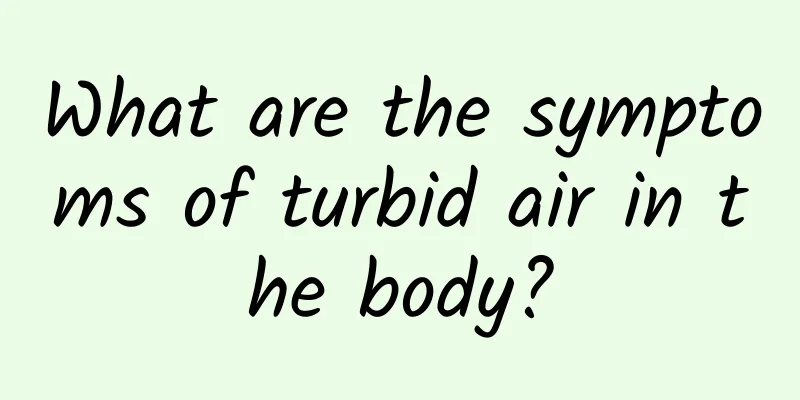Nine main symptoms of cervical spondylosis

|
Cervical spondylosis is relatively common in our daily life, especially in recent years, the incidence of cervical spondylosis is relatively high, which is related to people's sedentary working habits. There are many symptoms of cervical spondylosis. The most common one is pain in the shoulder and neck, which can lead to limited mobility of the shoulder and neck. In more serious cases, it can cause nerve compression, leading to symptoms such as dizziness and nausea. Nine main symptoms of cervical spondylosis 1. Neck, shoulder and back pain: Pain is the basic symptom of cervical spondylosis. Almost all cervical spondylosis have very significant pain symptoms in the early stage or throughout the whole process. The pain can occur in the neck, shoulder and back. Studies have found that among cervical spondylosis patients, 92% complain of neck pain, 71% shoulder pain, 44% upper arm pain, 31% forearm pain and 37% headache. 2. Restricted activities: The range of motion of the cervical spine is significantly reduced compared to normal or before. The patient feels stiff, rigid, and sore muscles in the neck, shoulders and back. He is unable to bend forward or backward and has difficulty turning the neck. Sometimes, when he turns the neck with a little force, he feels severe pain that radiates to the upper limbs. Many patients experience obvious dizziness when turning the neck, and severe cases may even collapse suddenly. 3. Pain and numbness in the upper limbs Upper limb pain is mostly tingling, distending, and burning pain. In severe cases, it radiates from the neck and back to the arms (outside upper arm, inside and outside forearm, inside and outside elbow joint). Coughing, sneezing, and deep breathing can all induce unbearable radiating pain. Most patients have worsening symptoms at night, tossing and turning, or even unable to sleep all night. Oral analgesics are not effective, and the duration ranges from several days to several months. 4. Cervical headache Various types of cervical spondylosis, including radiculopathy, spinal cord disease, sympathetic disease, and vertebral artery disease, can cause headaches. Almost all patients with sympathetic cervical spondylosis have headaches without exception. Up to 60% to 80% of patients with vertebral artery disease have headaches, and a considerable number of patients with radiculopathy also have headache symptoms. 5. Dizziness Dizziness. Patients have the hallucination that themselves or the surrounding scenery are rotating in one direction, the body is unstable when standing, and they feel that objects are tilting or sinking. It is often triggered by changing body position, excessive flexion and extension, or rotation of the head. Seizures can be brief or last for hours or longer. Vertigo attacks may be accompanied by symptoms such as tinnitus, nausea and vomiting, cold sweats, palpitations, and cold limbs. Some patients experience a feeling of dizziness, a sense of heaviness in the head, drowsiness, and lack of energy. 6. Sore throat: It is mainly seen in patients with pharyngeal (esophageal) cervical spondylosis. It is caused by bone hyperplasia at the anterior edge of the cervical vertebrae or forward protrusion of the intervertebral disc, which stimulates or compresses the posterior pharyngeal wall or esophagus. The main manifestations are pharyngeal and esophageal symptoms such as dry throat, throat pain, obvious foreign body, dysphagia, hoarseness, etc. It is very easy to be misdiagnosed as chronic pharyngitis, esophageal cancer or neurosis. The misdiagnosis rate before diagnosis can be as high as 80~90%. Almost all patients in the early or acute stages of cervical spondylosis have symptoms of redness, swelling and pain in the throat, which is especially common in young and middle-aged patients. Of course, it should be distinguished from sore throat caused by many other diseases, such as sore throat caused by colds, chronic pharyngitis, purulent tonsillitis, and rheumatism. 7. Panic and insomnia Most of the time, it is caused by vertebral bone hyperplasia and bone spur formation in cervical spondylosis, cervical joint disorder and dislocation, intervertebral disc herniation and other factors that stimulate or compress the sympathetic ganglia or carotid sinus in the neck, resulting in a series of symptoms of sympathetic nerve disorder that controls the internal organs. 8. Head and facial features Because the nerves and blood vessels that control the head and facial organs and soft tissues all pass through or are emitted from the cervical vertebrae, when cervical spondylosis occurs and stimulates or compresses the above-mentioned nerves and blood vessels or even directly compresses the corresponding soft tissues, different symptoms of facial and facial diseases will appear. Especially when no significant abnormalities are found after corresponding specialist examinations and corresponding specialist treatments are ineffective, and the patient also has typical symptoms of cervical spondylosis, cervical spondylosis should be considered to be the cause. 9. Gait instability Gait instability is a typical feature of cervical spondylotic myelopathy. Patients often experience a feeling of unsteadiness when walking, with one foot heavy and the other light, as if walking on cotton. A large number of patients first experience numbness and heaviness in one or both lower limbs, followed by difficulty walking, muscle atrophy in the lower limbs, slow stepping, and inability to walk quickly. In severe cases, gait becomes unstable and they are unable to run, and their feet feel as if they are stepping on cotton. Gait instability is mostly due to degeneration of the cervical intervertebral disc, joint instability, bone spur formation, and the protruding mixture that constantly stimulates and compresses the spinal cord. In addition, the thickened yellow ligament at the back wrinkles when the neck is extended, which stimulates or compresses the spinal cord from the back, resulting in typical symptoms of cervical spondylotic myelopathy. |
>>: Seventeen symptoms of mild autism
Recommend
What should I check if I haven't gotten pregnant for half a year?
Many couples who want to have children will prepa...
What drugs can quinoline copper be mixed with?
Many people know that there are various types of ...
Is there any harm in using an electric potential therapy device? What is the effect
I believe that many people often see potential th...
What gynecological diseases require surgery?
The female body structure is more complex than th...
Symptoms of hormone face getting better soon
The so-called hormone face is a skin manifestatio...
The efficacy and function of rock beads
Rock bead is a Chinese herbal medicine, also know...
What to do if your feet are sweaty and smelly
Many friends will have smelly feet due to excessi...
What are the symptoms of dampness?
Genital warts are a disease caused by human papil...
What are fat particles on the labia?
If a woman finds fat particles on her labia, gene...
How to treat hypoxic-ischemic encephalopathy in premature infants
Speaking of hypoxic-ischemic encephalopathy in pr...
How to quickly remove scars
Scars are caused by damage to the skin. Scars wil...
What should I do if my ovaries are removed at the age of 28?
For female friends, their reproductive organs are...
What can I eat to enhance my sexual performance?
Today's society is developing more and more l...
Purple cardamom efficacy and function
Zikou Pills is a herbal medicine and a medicine w...
Numbness in hands and feet after waking up
After waking up, you feel uncomfortable and your ...









